
Investing to Save the Planet: How Your Money Can Make a Difference
by
Alice Ross
Published 19 Nov 2020
BMW and Volkswagen also invested in Northvolt, which said at the time of its 2019 fund-raising that it would use the money to build Europe’s largest lithium-ion battery plant, to begin production in 2021. Some people are investing in green hydrogen batteries. Green hydrogen is made by converting wind or solar electricity into hydrogen through electrolysis, while blue hydrogen is produced from fossil fuels. In 2019, Trafigura, one of the world’s top commodity trading houses, took a stake in German start-up Hy2gen AG, which builds green hydrogen production facilities. Yet other investors warn that hydrogen fuel cell technology is an area where there is a lot of ‘hype’. Christian Roessing, manager of the Pictet Clean Energy fund, says that the interest in certain smaller companies in this field reminds him of the solar boom in the noughties that ended in tears for so many companies and investors.
…
AB InBev 176 active funds 30, 31, 41, 83, 96, 97, 98, 125 activist investors 69–77, 84–90, 100–101 advertising 77, 79, 80, 151, 202 AGMs (Annual General Meetings) 70–73, 84, 87, 104 agriculture 85, 120, 145–62; alternative food 22, 145–56; farming 22, 156–9; food waste 149, 159–61; greenhouse gas emissions 148–9, 150, 156–8, 159, 160; high-risk investors 162; low-risk investors 161; medium-risk investors 161–2; vegan diet/alternative meat 146, 149–56, 162 air conditioning 18, 38–9, 164, 170–71, 179, 194 alternative investment market (AIM), London 25, 31–2, 142 Amazon (online retailer) 19, 73–4, 157, 197 American Council for an Energy-Efficient Economy 165 ammonia, green 142–3 Amundi IS Equity Europe Low Carbon fund 63 Angel Academe 155 angel investing 37–9, 43, 155, 156, 160, 162 An Inconvenient Truth (film) 2 Anterra Capital 157, 160 apartheid, South Africa 3, 48, 51–2 Apple 33, 38–9, 91–2, 127 Applied Materials 167 Arctic, energy exploration in 66, 82 As You Sow 83, 104 asset classes see individual asset class name asset managers 11, 12, 58, 74, 88, 89, 90, 95, 119, 168 aviation 18, 22, 99, 129, 140–42, 167, 194, 199 AXA Investment Managers 77, 88, 95 Balk, Josh 146, 153–4 Ballard Power 138 Bank of America Merrill Lynch 6, 84 Bank of England 193 Barclays Bank 48, 73, 75, 182–3, 200 Barry, Michael 45, 46, 51, 55–6, 59, 60 batteries 15, 22, 113, 115–16, 128, 172; battery infrastructure 128; battery swapping 128, 139; charging 22, 113, 128, 130, 139–40, 203; green hydrogen 138; lithium-ion 115–16, 136, 137; role of 136–8 ‘best in class’ companies 7, 10, 92, 100, 134, 161–2, 176 Beyond Carbon 16 Beyond Meat 7, 15, 35, 36, 135, 150, 152–3, 154, 155, 162 Bezos Earth Fund 19 Biffa 174 billionaires, ‘green’ 14–17, 18, 19, 120, 124, 126 biofuels 22, 113, 140–43 biomass 110, 112 Bioy, Hortense 85, 197–8 Birol, Fatih 112, 202–3 BlackRock 14, 25, 26, 88, 89–90, 97, 199 Blood, David 1–2, 54, 135 Bloomberg 15, 104, 133 Bloomberg, Michael 16, 17, 19 Bloomberg New Energy Finance 136, 139 BMO European Equity (BMO Sustainable Opportunities) 11 BMO Responsible Global Equity fund 91–2 BMW 15, 129, 134, 137, 140, 143, 144 BNP Paribas 134, 161, 180, 181 BNY Mellon 177 Bollag, Benjamina 155–6 bonds 20, 26, 31, 32–4, 41, 44, 65, 66, 67; divestment and 65, 66, 67; green bonds 33, 42, 67, 83, 93–6, 195; transition bonds 67 Bond, Simon 67, 94 BP 4, 5, 9, 53, 76, 83, 99–100, 101, 102, 104, 108, 111, 114, 140, 188; net zero emissions by 2050 commitment 76, 79–80, 116, 186, 199; ‘Possibilities Everywhere’ ad campaign 79 Breakthrough Energy Ventures (BEV) 19, 52, 120, 121–2, 123, 124, 135, 137 Brin, Sergey 18 British American Tobacco (BAT) 54, 54n Brown Advisory Sustainable Growth Fund 197 Bruun, Michael 107, 108, 137 ‘Build Back Better’ slogan x, 201 Burger King 151–2, 153–4 Cambridge University 56–7, 65–7, 74–5; Institute for Sustainability Leadership 56–7 Canada Pension Plan Investment Board 137, 140 Candriam SRI Equity Climate Action fund 95, 165–6, 67 Capital Group 88 capital recycling 66, 67 Carbon Brief 198 carbon dioxide emissions 2, 7, 14, 16, 21, 22, 32, 33, 47, 53, 67, 83, 86, 87, 88, 89, 90, 95, 99, 102, 108–9, 168, 169, 180, 184, 191, 194, 202, 203; agriculture and 148–9, 150, 156–8, 159–60; carbon capture, use and storage (CCUS) 5, 117; carbon-offsets 5, 28, 63, 79, 150, 203; carbon price 187–90; coronavirus lockdown and 71, 109–10, 198, 199; disclosing 98, 103; divestment and 50–52; energy efficiency and 164, 165, 168–9, 172, 173, 175, 176, 177, 178; ‘net zero’ targets 5, 63, 71, 74, 76, 78, 79–80, 116, 126, 169, 176–8, 183, 186, 203; Paris Agreement (2015) and 4–5, 10, 42, 73, 74–5, 76, 78, 109–10, 111, 117, 132, 165, 188, 193; peak in 5, 111–12; scope 1 185–6; scope 2 185–6; scope 3 81, 175, 176, 185–7; transport and 129–34, 140–41, 142, 143 Carbon Tracker 53, 66, 180 Carney, Mark 190, 193–4 Cartier 11–12 CDP (formerly the Carbon Disclosure Project) 80–81, 86, 91, 153, 177, 178, 203 cell-based meat 155–6 Chargemaster 140 charging, battery 22, 113, 128, 130, 139–40, 203 charitable giving/philanthropy 5, 13, 14, 16, 19, 43, 123, 124 Chevron 116–17, 140 China 15, 61, 76, 114, 128–9, 131, 132, 164, 166, 170, 175 Church of England 74 circular economy 22, 163–79 cleantech crash (2007–8) 113–14, 171 Clearwater Fine Foods 142 ClientEarth 79 Climate Action 100+ initiative 76, 78, 83, 86, 105 Climate Bonds Initiative 94 Climate Group 86 Climate Leadership Council 188–9 climate solutions funds 6, 42, 125–6 coal 16, 21, 45, 46, 49, 52, 53, 67, 82, 87, 90, 109, 110–11, 112, 125, 183, 184, 187, 198 Columbia Threadneedle 67, 94 coronavirus pandemic ix–x, 22, 55, 64, 71, 90, 109–10, 112, 131, 132, 137, 138, 141, 151, 158, 168, 174, 175, 189, 196–8, 199–200, 201, 202, 203, 204 corporate bonds 32–3, 94 Cramer, Jim 61 Crop One Holdings 158–9 crowdfunding 43, 118, 119 CSM Energy 82–3 Curtis, Richard 40–41, 201 Deloitte 9, 191 Delta Airlines 79 Devon Energy Corp 194 diesel 183–4, 191 Dimensional Global Sustainable Core Equity 63 Dimon, Jamie 188 disruptive companies 52, 146, 153–4, 157, 171 dividends 31, 54, 54n, 55, 61, 68, 70, 80, 126, 144, 197 divestment 20–21, 22, 32, 45–68, 72, 82, 84, 85, 86, 92, 98, 104, 117, 185; capital recycling 66; economic case for 52–9; emissions reductions and 50–52; growth of movement 45–7; history of movement 47–50; how to invest after you divest 62–5; moral grounds 62; outside of equities 65–8; performance grounds 62; public shaming and 60–61 DNV GL 131, 136 Doerr, John 114 Dong Energy 107–8, 137 Draper Esprit 140 Drax 112 DS Smith 175 DWS 11, 77, 168 DyeCoo 173 early-stage investors 18, 38, 64, 121, 135, 140, 142, 148, 155, 179 EDF Energy 140 Edwards, Jenny 69–72, 73, 77, 84 electricity supply 112, 118, 120, 121, 125, 159, 169–70, 172, 185, 187, 194 electrification of transport 7, 10, 15, 29, 64, 73–4, 76, 113, 120, 127–44, 157, 163, 164, 194, 203; cars 7, 10, 15, 29, 64, 76, 103, 119, 129–30, 132–3, 134, 136, 157, 163, 164; mopeds 22, 127, 128 electrofuels 141 Ellen MacArthur Foundation 172 Emirates Flight Catering, Dubai 158 Energy Action Coalition 118 energy, investing in 11, 16, 35, 42, 80, 107–26, 138, 143, 157, 166, 167–8, 202–3; carbon dioxide emissions and 108–10; clean energy solutions 120–24; cleantech, new dawn for 115–20; cleantech crash (2007–8) 113–14, 171; entrepreneurs/Mosaic 118–20; high-risk investors 126; how to invest in clean energy 124–6; low-risk investors 126; medium-risk investors 126; primary energy consumption 111–12; renewable energy investment, history of 113–14; transitioning away from oil and gas/energy transition 19, 21, 39, 76, 84, 110–13, 123, 140, 194 energy efficiency, investing in 22, 33, 110, 161, 163–79, 183, 203; building and construction sectors 168–70; circular economy and 171–6; high-risk investors 178–9; low-risk investors 178; medium-risk investors 178; next-gen investors 170–71; semiconductor companies 143, 166–7, 178; weight reduction, investing in 167–8; zero emission pledges 176–8 engagement/effecting change 69–106; activist shareholders 69–74, 84–90; disclosure, improving 80–84; fund managers 73–4, 77–80; green bonds 93–6; greenwashing 77–80; passive investing 96–104; pension manager, putting pressure on your 90–93; professional fund managers and 75–7; retail investors/small investors 69–74, 84–90 ENI 117, 191 Environmental Recycling Technologies (ERT) 24–5 environmental score, ESG investing and 9, 10–11 see also ESG (environmental, social and governance) investing EO 139–40 equities 20, 26, 30–32, 33–4, 41, 44, 53, 64, 66, 68, 95, 195 ESG (environmental, social and governance) investing 61, 62, 66, 90, 95, 132–3, 147, 181, 182, 183, 184, 190, 191, 195; coronavirus and/future of 196–200; defined 8–12, 29–30, 44, 190, 195; ETFs 97; passive investor 99–104; pension funds and 92, 93; score and debt 82, 98 ETFs (exchange-traded funds) 30, 96–7, 100–1, 102, 124–5 European Investment Bank 94 European Union 103, 129, 130, 141, 169, 176, 183, 186, 191 ex-fossil fuel funds 42, 62, 63, 68, 85, 106 Extinction Rebellion 13 ExxonMobil 53, 61, 89, 116, 117, 188 family offices 18–19, 122–3, 142, 156, 182 Farmobile 157 fashion 28, 62, 175–6 Fidelity 103 financial advisers 12, 27, 29, 43, 44, 49, 95, 105, 182, 184 Financial Conduct Authority 192 financial crisis (2008) 1, 3–4, 17, 29, 114 Financial Stability Board 58 Fink, Larry 14, 90 Fluor 89 food see agriculture Food Freshness Technology 160 Ford Motors 177 fracking 79 FTSE 100 30, 31, 54, 55, 56, 103, 112, 175; Environmental Opportunities All Share index 56; Global All Cap index 56; TPI Climate Transition Index 74 fuel: aerodynamic systems and 39; alternative/biofuels 22, 53, 111, 113, 140–43; cells 10, 138, 142, 144, 154, 166; aviation and see aviation; fossil see individual fuel type fund managers 10, 11, 12, 43, 49, 60–61, 66–7, 89, 95, 97, 98, 105, 108, 143, 181; activist 13, 14, 30, 73–6, 83, 85, 86, 89, 91; energy efficiency and 166, 167, 168, 172; greenwashing and 10–12, 41, 77–81; passive funds and 96, 97, 98; pensions and 39–40; ‘star’ 96; varying definitions of ESG 102, 103, 104 Gates, Bill 17, 18, 19, 52, 120, 126, 137 Generac 195 Generation Investment Management 2, 135 Georgetown University, Washington DC 45, 46, 51, 55–6, 60 Global Commission on the Economy and Climate 63 Global Reporting Initiative 190 Gogoro 128, 139 Goldman Sachs 1, 1n, 54, 77, 82, 107–8, 119, 137, 181, 189 Gore, Al 2, 135, 202 governance, good 8, 9, 40, 56, 61, 73, 88, 92, 98, 99, 103, 184, 195–6, 197 Government Pension Investment Fund of Japan 74, 93, 98, 180 green economy 33, 56, 203 greenhouse gas (GHG) emissions 109, 129, 141, 143, 148, 149, 150, 157–8, 160, 173, 187, 199 see also carbon emissions greenwashing 10, 12, 14, 20, 41, 77, 78, 88, 89, 90, 91, 96, 101, 104, 191, 192–3 Growing Underground 158–9 Hampshire College 46 Hampton Creek 146–7 H&M 62, 175 Harari, Yuval Noah 204 Harvard University 51–2, 67 hedge funds 4, 13, 14, 75–6, 80, 89 Hepburn, Cameron 72, 203 Hermes 83 high-voltage direct current (HVDC) 120–21 Higher Steaks 155–6 Hohn, Christopher 13–14, 80, 89 Howard, Andy 189–90 Howarth, Catherine 192–3 HSBC 88, 174, 175, 176 Hy2gen AG 138 hydrogen 113; aviation solutions 18, 142; batteries 138; blue 138; fuel cells 10, 138, 144, 154, 166; trucks/cars 15, 143 hydropower 131, 137 Hyundai 143 IKEA 160, 173 impact investment 43, 123 Impax Asset Management 77, 90, 157, 166, 176, 195 Impax Environmental Markets fund 90, 166, 172, 173, 175 Impossible Foods 15, 150, 152–3 Indigo 157 Ineos 78–9 ING 82 Ingka Group 160 InstaVolt 139–40 institutional investors 7, 9, 13, 18, 21, 31, 34, 67, 75, 76–7, 87–8, 94, 119, 122, 168, 191, 203 Institutional Investors Group on Climate Change (IIGCC) 76–7, 168, 203 Intergovernmental Panel on Climate Change (IPCC) 2, 5, 149, 160 internal combustion engine (ICE) vehicles 64, 130, 131, 182, 183–4 International Council on Clean Transportation (ICCT) 143 International Energy Agency (IEA) 111–12, 113, 115, 117, 129, 130, 164, 165, 168, 169, 170, 202 International Maritime Organization, The 143 International Monetary Fund (IMF) 56, 58, 187 Invesco Solar ETF 125 Ireland 46–7, 94, 125 Irena 110, 130, 132 iShares Global Clean Energy ETF 124–5 J.
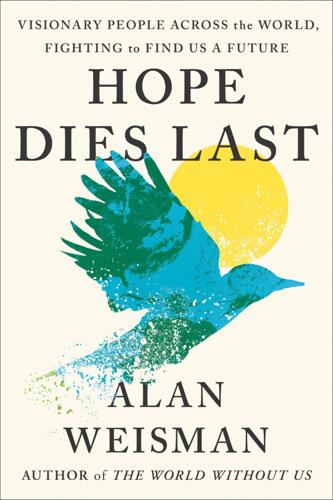
Hope Dies Last: Visionary People Across the World, Fighting to Find Us a Future
by
Alan Weisman
Published 21 Apr 2025
“ARC: A Compact, High-Field, Fusion Nuclear Science Facility and Demonstration Power Plant with Demountable Magnets.” Fusion Engineering and Design 100 (November 2015): 378–405. https://www.sciencedirect.com/science/article/abs/pii/S0920379615302337. St. John, Jeff. “The Problem with Making Green Hydrogen to Fuel Power Plants.” Canary Media, October 10, 2023. https://www.canarymedia.com/articles/hydrogen/the-problem-with-making-green-hydrogen-to-fuel-power-plants. Talk to a Geek. “Brandon Sorbom Explains MIT’s ARC Fusion Reactor.” Facebook video. February 16, 2018. https://www.facebook.com/TalkToGeek/videos/357491848069214. Vaughn, Adam. “UK Nuclear Fusion Reactor Will Fire Up for the First Time in 23 Years.”
…
In water, its bond with oxygen is so tight that it takes considerable electricity to extricate it. Prying hydrogen from hydrocarbons is easier and cheaper but a lot messier: it’s done by blasting natural gas with steam, which burns even more carbon. Using solar or wind energy to power electrolysis is called green hydrogen—but although touted as a clean pathway to decarbonizing, producing renewable electricity to make hydrogen fuel, which is then used to make electricity again—isn’t very efficient. The other big catch is that hydrogen is the most abundant element because it’s the simplest: 99.9 percent of it is just one positively charged proton orbited by one negatively charged electron.
…
“Breakthroughs don’t happen with a lone genius thinking in a corner,” he tells them. “It’s usually a half dozen people pushing themselves, using each other’s strengths to find a way.” His classes have more than doubled in size as more students, especially more women, want to be part of history—and of a future. Ramping up clean fusion could limitlessly electrolyze green hydrogen, to replace the mostly gray, carbon-intensive hydrogen from methane currently on the market. “An even wilder dream,” says Whyte, “would be powering atmospheric carbon capture and storage, to actually pull us back from this climate precipice.” First, a full-scale ARC must not only work but also be affordable and globally replicable.
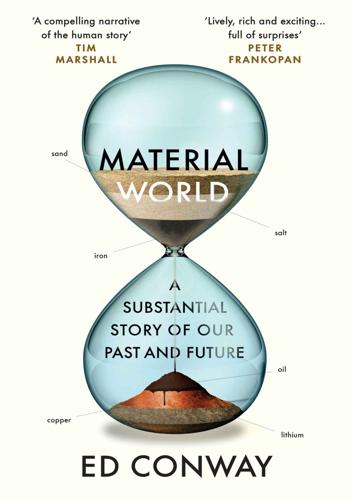
Material World: A Substantial Story of Our Past and Future
by
Ed Conway
Published 15 Jun 2023
In other words, rather than using coal or gas to make our fertilisers, in future we could feed with the world with ammonia made from green hydrogen, created from wind power. However, using electrolysis to create hydrogen is eye-wateringly inefficient. Consider the biggest nitrate factory in the UK: that old ICI plant on the banks of the River Tees in Billingham, the one Aldous Huxley visited before writing Brave New World . It is a slightly sprawling site, but the main business, the conversion of air and hydrogen into ammonia, all takes place in a few tall vessels, which occupy less space than a medium-sized office complex. Creating the green hydrogen you would need to feed this fertiliser plant would consume the entire output of what was, at the time of writing, the world’s biggest wind farm, Hornsea One in the North Sea.
…
Cars are still mostly made out of virgin steel.10 But there are also other ways of making virgin steel without a blast furnace and all its emissions. A technology called ‘direct reduced iron’ can turn ore into a form of iron without all that coal we saw at Port Talbot and without emitting any carbon dioxide. However, there are a few catches. The first is that this green steel needs a hefty amount of hydrogen to work, and producing green hydrogen without burning fossil fuels is an expensive process. The second is that you cannot throw any iron ore into it. Instead, you need pellets with far higher grades of iron than go into most blast furnaces today. When it comes to this new green steel, Pilbara iron, whose quality has been falling for years as the best ores are mined out, may not make the grade.
…
As we walked the long roads that bisect the site, Marco pointed towards a green set of tanks built alongside a brick wall. They looked very much like a remnant of the war, and sure enough they were one of the few surviving parts of the original Nazi plant. Once upon a time those tanks helped to make fuel from coal. Then they helped to make it from crude oil. Now they were being repurposed to hold green hydrogen, being created at a bank of electrolysers just around the corner. It’s an ambitious, untested plan – perhaps overambitious. And this is just one refinery; tellingly Shell’s other site on the other side of the Rhine will carry on burning and refining crude oil for many more years. Still: it’s a seductive idea, that this site, where every corner contains reminders of a history no one much likes to discuss, could soon become a glimpse of the future. 15 The Everything Thing There’s an old story people sometimes tell about John D.

What If We Get It Right?: Visions of Climate Futures
by
Ayana Elizabeth Johnson
Published 17 Sep 2024
With the Inflation Reduction Act, $360 billion went to the DOE loan program that’s now run by Jigar Shah, who is trying to figure out how government investment can best help de-risk the next set of technologies we need to decarbonize our economy.[*105] And now the CREO community is trying to repeat what it did with solar with advanced nuclear, green hydrogen, sustainable aviation fuels, and carbon capture and utilization. And we are starting to think about how we adapt to climate change while mitigating greenhouse gases—like, how are we going to manage rising temperatures requiring more air-conditioning units, when we are trying to decarbonize the energy sector?
…
Ayana: So the tech that you’re talking about for reaching this 2030 goal, that’s primarily wind, solar, and storage at this point? Jigar: Yeah, and also hydrogen. We produce 10 million tons of hydrogen a year in the United States and all of it’s gray, produced from natural gas.[*107] But there are already announced projects that could produce up to 10 million tons of clean, green hydrogen by 2030, mostly made using an electrolyzer to convert clean electricity into hydrogen—that technology was invented well before World War II. We have the ability to green all of our hydrogen that we use in our country. And we have ways of reducing the carbon footprint of other industrial processes (like making steel and cement) using hydrogen as well, instead of coal.
…
See legislation; public policy Graeber, David, 4n Granholm, Jennifer, 182 Great American Outdoors Act of 2020, 332 green capitalism, 173 Green Climate Fund, 273 greenhouse effect. See global warming greenhouse gases, 16n key emissions sources, 22–23, 34, 56–57, 80, 88 See also carbon emissions; global warming green hydrogen/hydrogen fuels, 184–86, 187, 336 green infrastructure, 92 Green New Deal, 49, 149, 222n, 283–301, 305, 306–7 Gunn-Wright on the framework and its impact, 285–301 the House/Senate resolution, 283, 284 public opinion about, 283–84, 288, 291 greenwashing, 160, 166, 203, 231 See also corporations and corporate responsibility GreenWave, 400, 405–11, 412, 414 See also Smith, Bren grid management, 127 Grijalva, Raúl, 313, 316, 338 Grist, 236, 306 gumption, 4 Gunn-Wright, Rhiana, 49, 285, 421 interview, 285–301 Gutiérrez-Graudiņš, Marce, 316 H Hamer, Fannie Lou, 73 Hansen, Jim, 23, 158 health.
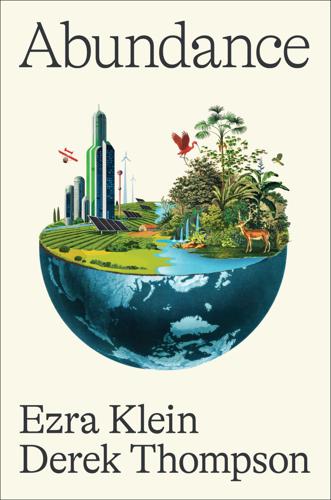
Abundance
by
Ezra Klein
and
Derek Thompson
Published 18 Mar 2025
The only reason we have even the barest hope of avoiding catastrophic warming is that the cost of solar power has fallen by 89 percent and onshore wind costs by almost 70 percent in ten years.14 California’s decision to ban the sale of new gas-powered cars after 203515 would be unthinkable without the rapid advances in battery technology. Much that we need for the world we want we already know how to build. But much that we need for the world we want still needs to be invented and improved. Green hydrogen and cement. Nuclear fusion. Treatments for the terminal cancers that overwhelm today’s therapies and the shadowy autoimmune diseases that baffle today’s doctors. AI that molds itself to the needs of children who learn and think differently. Markets will, we hope, proffer some of these advances.
…
In the 2024 election, one of Kamala Harris’s first policy proposals was to build 3 million new homes:21 a supply-side policy that reflected a decade of persuasion and organizing by liberals who’d come to see the suffering that housing scarcity was causing in their cities. We see it in the climate movement, which helped persuade the Biden administration to pass a slew of bills intended to expand the supply of clean energy and pull forward needed innovations like green hydrogen. Environmentalists realized that sacrifice and scarcity was a losing politics. They needed a strategy that married the life Americans want with the clean energy the planet could tolerate. Investments in solar and wind installation, in electric vehicle plants and factories to manufacture next-generation batteries, have rocketed upward since.

How to Spend a Trillion Dollars
by
Rowan Hooper
Published 15 Jan 2020
A small amount of hydrogen is currently produced by electrolysis, but that process is itself powered by fossil fuels. What is needed is genuinely green hydrogen, where the electrolysis of water is powered by renewable energy, and we need this on a huge scale. The good news is that the technology is ready – the hydrogen-driven transformation of the economy is already underway, albeit slowly. In Sheffield, for example, ITM Power has opened the world’s largest green hydrogen electrolysing plant. A modest (by our standards) investment in this area will help speed the transition. It is already as cheap to make hydrogen by electrolysis from renewable sources of energy as it is to make it conventionally, from fossil fuel.25 And a 2020 report from BloombergNEF26 showed that hydrogen made from renewable energy will become as cheap as natural gas, but obviously without the associated carbon emissions of the fossil fuel.

The Climate Book: The Facts and the Solutions
by
Greta Thunberg
Published 14 Feb 2023
According to the New Scientist, 96 per cent of hydrogen is currently being made from fossil fuels, which makes it far from being a renewable or fossil-free energy solution today. But it can also be made from water, using renewable energy such as wind and solar in the process. This is called green hydrogen and it can be used as an alternative to fossil fuels in certain circumstances, for example where the energy source can’t be electrified or where the energy needs to be stored for a longer time period than is efficient for a battery. The problem, however, is that green hydrogen requires an abundance of cheap renewable energy, something that is not likely to be seen in the near future. Making hydrogen through electrolysis using nuclear power is called pink hydrogen, and there is also blue hydrogen, which is made from fossil fuels using carbon capture and storage.
…
Wind parks can be built close to motorways and industries, or in places where few people are affected and the consequences for wildlife are minimal, for example in off-shore locations. Technology is also making it increasingly possible to have mobile offshore power plants, which reduce NIMBY (Not in My Backyard) complaints. / Green hydrogen Hydrogen is an electricity source and a fuel which leaves only water behind when used in a fuel cell. However, hydrogen largely does not exist by itself in nature so it must be produced from other sources, mainly methane or water. This process requires more energy than the fuel itself gives in return.
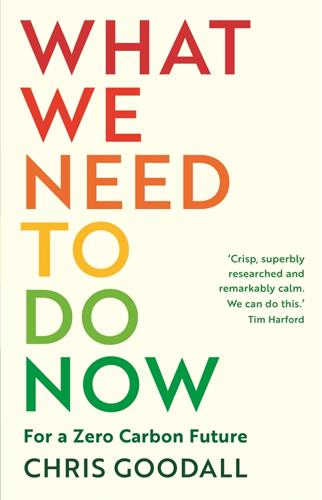
What We Need to Do Now: A Green Deal to Ensure a Habitable Earth
by
Chris Goodall
Published 30 Jan 2020
If this was mandatory, the transition to a position where all boilers are hydrogen-capable would take around fifteen years, but a sensible scheme would offer a mixture of incentives and regulations to speed things up. In the meantime, the UK could follow other European countries and allow a small amount of hydrogen to be mixed into ordinary natural gas. Addition of hydrogen is effectively banned in the UK, but other countries allow up to 20 per cent. This would be an early and large market for green hydrogen produced from surplus electricity. Experiments currently being started by gas network operators eager to push the switch to hydrogen will confirm the feasibility and safety of this switch. INSULATE HOMES SO WELL THAT THEY USE VIRTUALLY NO ENERGY The UK government has tried to improve our woeful housing stock over the last couple of decades, initially with programmes focused on insulating cavity walls, improving roof insulation and installing new and more efficient boilers.

The Green New Deal: Why the Fossil Fuel Civilization Will Collapse by 2028, and the Bold Economic Plan to Save Life on Earth
by
Jeremy Rifkin
Published 9 Sep 2019
Carey, 1796) https://oll.libertyfund.org/titles/1669 (accessed May 11, 2019). CHAPTER 4 1. J.-F. Mercure et al., “Macroeconomic Impact of Stranded Fossil Fuel Assets,” Nature Climate Change 8, no. 7 (2018): 588–93, doi:10.1038/s41558-018-0182-1. 2. “Declaration of the European Parliament on Establishing a Green Hydrogen Economy and a Third Industrial Revolution in Europe Through a Partnership with Committed Regions and Cities, SMEs and Civil Society Organisations,” 2007, https://eur-lex.europa.eu/legal-content/EN/TXT/?uri=CELEX%3A52007IP0197 (accessed March 23, 2019). 3. “Directive 2009/28/EC of the European Parliament and of the Council on the Promotion of the Use of Energy from Renewable Sources,” Official Journal of the European Union (2009): L 140/17. 4.

Nomad Century: How Climate Migration Will Reshape Our World
by
Gaia Vince
Published 22 Aug 2022
Small changes to the altitude and time of day that flights are made can affect contrail formation, and they could be avoided entirely by rerouting planes to higher or lower altitude, at little cost and huge benefit.8 Taxing aviation would help to reduce unnecessary business flights that could be replaced with video-conferencing, but the extremely wealthy in society, who cause, disproportionately, by far the most emissions, will not be dissuaded by reasonable taxes. Instead, private jets should be banned unless they are electric. In the future, synthetic aviation fuels made from captured carbon dioxide and green hydrogen could bring a renaissance in flight. Airships, or blimps, could also have a role in our northern world, helping transport cargo to the cities and remote mines of the Arctic during the seasons when they are inaccessible by ground transport, and several companies are already exploring the idea
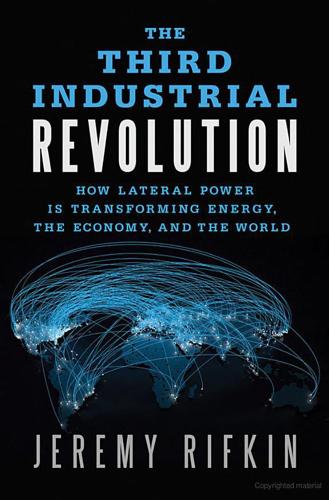
The Third Industrial Revolution: How Lateral Power Is Transforming Energy, the Economy, and the World
by
Jeremy Rifkin
Published 27 Sep 2011
Retrieved from http://www.daimler.com/dccom/0-5-658451-1-1236356-1-0-0-0-0-0-13-7165-0-0-0-0-0-0-0.html. 55.The World Factbook. (2011). Central Intelligence Agency. Retrieved from https://www.cia.gov/library/publications/the-world-factbook/. 56.European Parliament. (2007, May 14). Written Declaration Pursuant to Rule 116 of the Rules of Procedure on Establishing a Green Hydrogen Economy and a Third Industrial Revolution in Europe through a Partnership with Committed Regions and Cities, SMEs and Civil Society Organisations. Retrieved from http://hyfleetcute.com/data/MEP%20 Green%20H2%20Declaration.pdf. CHAPTER 3 1.Nasa Temp Data. (2010, December 22). E-mail message to J.